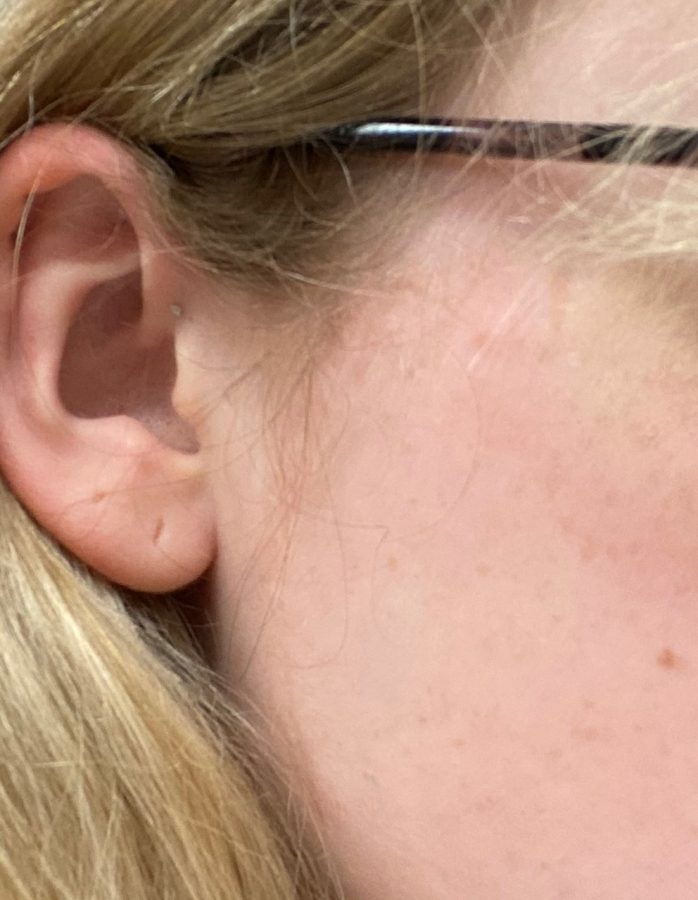Dog Bite Leads to Understanding of Animal Body Language
Photo by: Mara Cowen
The scar many years later.
October 11, 2021
Many years ago, a 4-year-old girl and her family drives to Michigan to visit their grandpa at his home. Upon arrival, her curious self sees her grandpa’s original rust colored, 1974 Chevrolet truck. She opens the truck door realizing that her grandpa’s hunting dog, a black lab that is about 11 years old, lounges in the cab of the truck. The little girl starts climbing into the cab, getting too close to the dog. The dog then snaps and bites the little girl in the cheek, tearing her cheek open and exposing her teeth.
That little girl is now a senior at NHS who performs in multiple musicals and plays.
“Living with a big scar on your face gets pretty annoying when that’s the first thing people notice.”
The injury is so invasive that she receives 2 layers of about 36 stitches, along with surgical glue to help the wound heal. She reflects that right after the attack she is in an excruciating amount of pain, although she does remember because the adrenaline kicks in and helps numb the pain.
She shares that she is not afraid of dogs from the accident. In fact, she volunteers with dogs and showcases her ability to read animals body language, so that this doesn’t happen again.
As a firm believer that animals are not naturally aggressive, she now understands that dogs can get snippy and temperamental — her actions caused the dog to snap.
Sadly, a few years prior to her accident, her brother is bitten by the same dog. Because of that the black lab no longer lives.


